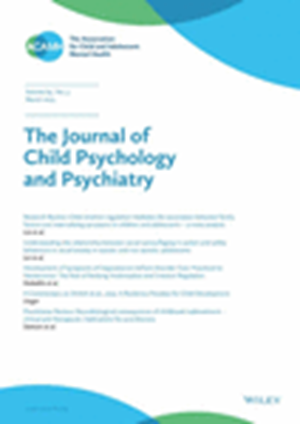编辑视角:传播心理健康信息如何(无)有帮助——一个动态系统方法。
IF 7
1区 医学
Q1 PSYCHIATRY
引用次数: 0
摘要
提高对心理健康问题的认识,包括对年轻人的认识,通常被视为是积极的,国际上正在进行许多提高认识的干预措施。然而,对提高认识的利与弊仍缺乏原则性的评估。在这里,我们提出了一个概念性框架,用于评估旨在提高公众对心理健康问题认识的信息干预措施。我们借用动态系统的概念,如感染传播和相关的人口增长,来询问心理健康信息的益处和危害是如何随着时间的推移而积累的。我们认为,随着信息的传播,引发了一系列事件,涉及普通公众,也涉及临床医生和医疗保健服务。这些级联包括积极和消极的反馈循环。我们不仅讨论了增加的诊断如何带来积极的结果(例如,增加诊断率并对那些本来不会被诊断的人进行适当的治疗),而且还讨论了提高认识如何导致诊断准确性降低,服务过载,以及它们如何使人们接受不必要或有害的治疗。我们认为,需要建立一个基于社会动态建模的框架,以确保准确衡量心理健康信息的好处和坏处,并帮助规划更好的公共卫生运动。本文章由计算机程序翻译,如有差异,请以英文原文为准。
Editorial Perspective: How spreading mental health information can be (un-) helpful - a dynamic systems approach.
Increasing awareness of mental health problems, including that of young people, is generally seen as positive, and many interventions to increase awareness are underway internationally. Yet, a principled evaluation of the benefits and harms of increasing awareness is still lacking. Here, we present a conceptual framework for the evaluation of information interventions that are aimed at increasing public awareness of mental health problems. We borrow concepts from dynamic systems, such as infection spread and related population growth, to ask how benefits, but also harms of information on mental health, may accrue over time. We argue that as information spreads, several cascades of events are set off that involve members of the general public but also clinicians and healthcare services. These cascades entailinvolve positive and negative feedback loops. We discuss not only how increased diagnoses can lead to positive outcomes (e.g. increasing diagnostic rates and appropriate treatments in those who would otherwise have remained undiagnosed) but also how increased awareness can lead to decreases in diagnostic accuracy, to service overload, and how they may expose people to unnecessary or harmful treatments. We argue that the need for a framework founded on modelling societal dynamics is needed to ensure that both the benefits and the downsides of mental health information are accurately gauged and to help the planning of better public health campaigns.
求助全文
通过发布文献求助,成功后即可免费获取论文全文。
去求助
来源期刊
CiteScore
13.80
自引率
5.30%
发文量
169
审稿时长
1 months
期刊介绍:
The Journal of Child Psychology and Psychiatry (JCPP) is a highly regarded international publication that focuses on the fields of child and adolescent psychology and psychiatry. It is recognized for publishing top-tier, clinically relevant research across various disciplines related to these areas. JCPP has a broad global readership and covers a diverse range of topics, including:
Epidemiology: Studies on the prevalence and distribution of mental health issues in children and adolescents.
Diagnosis: Research on the identification and classification of childhood disorders.
Treatments: Psychotherapeutic and psychopharmacological interventions for child and adolescent mental health.
Behavior and Cognition: Studies on the behavioral and cognitive aspects of childhood disorders.
Neuroscience and Neurobiology: Research on the neural and biological underpinnings of child mental health.
Genetics: Genetic factors contributing to the development of childhood disorders.
JCPP serves as a platform for integrating empirical research, clinical studies, and high-quality reviews from diverse perspectives, theoretical viewpoints, and disciplines. This interdisciplinary approach is a key feature of the journal, as it fosters a comprehensive understanding of child and adolescent mental health.
The Journal of Child Psychology and Psychiatry is published 12 times a year and is affiliated with the Association for Child and Adolescent Mental Health (ACAMH), which supports the journal's mission to advance knowledge and practice in the field of child and adolescent mental health.

 求助内容:
求助内容: 应助结果提醒方式:
应助结果提醒方式:


